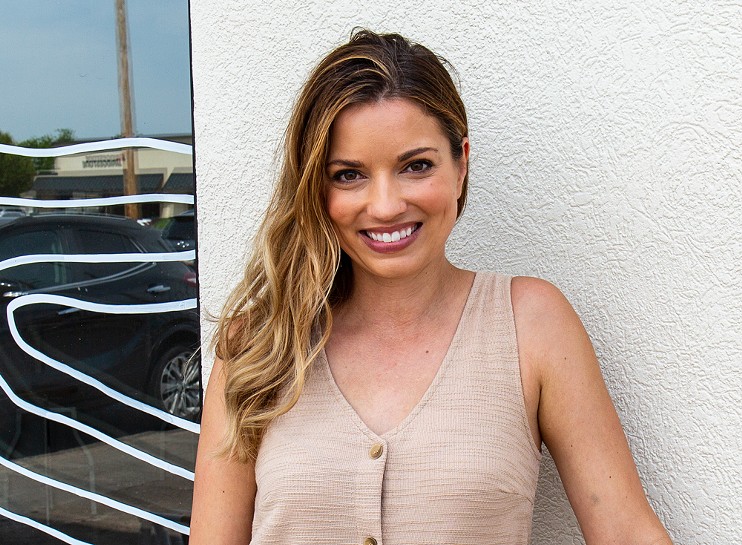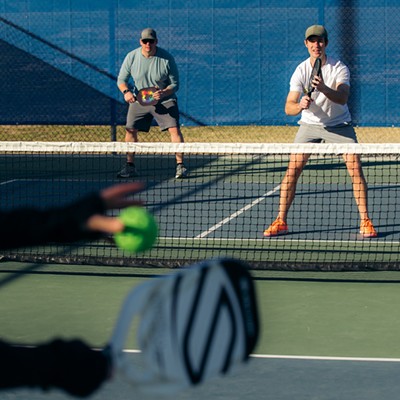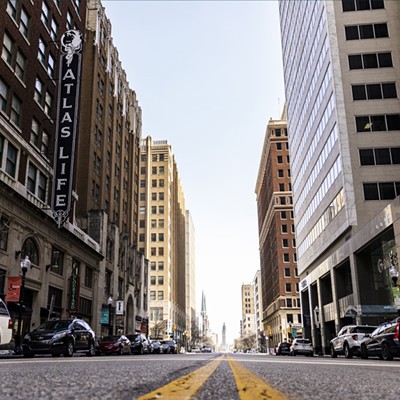Food brings people together, and Aley Cristelli uses Pine Pantry to connect with her neighbors.
“I definitely got started because of the idea of sharing a love for food,” Cristelli said. “My grandmother used to do this thing at Christmas time where she’d spend weekends baking all of these cookies. Then right before Christmas, all the cousins would go to her house and we’d take these plates of cookies to all the neighbors. So some of it is just seeing the love from that. Every time we went to her house, we’d leave with bags of food and snacks and soups, and all this stuff that she made for us, and that memory really inspired this. When I moved here from Dallas, I honestly didn’t have the best attitude about it; it didn’t feel like home. I was like, ‘Well, you’ve got to do something to make it feel like home. I learned about the free little pantry movement online and how they were popping up all over the country. When I came across a pantry in McKinney, Texas, I thought, ‘If they can do it, I can do it.’ So I reached out and asked some questions and decided to make it happen here.”
Aley reached out to her network and quickly found someone to build her first pantry. Before she knew it, it had a home in the Plaza District and is now located in front of Bad Granny’s Bazaar. Aly Cunningham requested a Pine Pantry at each of the four Sunnyside Diner locations and a sixth location at Andrew Johnson Elementary helps meet the needs of families in the community, often simply helping with an extra snack in food-insecure homes.
“Pine Pantry is meant to fill in the gaps of other more traditional food resources,” she said. “Hopefully, if somebody is food insecure, they’re reaching out and getting SNAP, or if they’re eligible, WIC for their kids, or working with the Food Bank, there are all of these other resources. But they can be slow and sometimes not enough, so the pantry is there to help. Plus we have a lot of people who are experiencing homelessness and they need a bottle of water and a snack right then and there.”
The pantries encourage others to consider the needs of their neighbors. Each location is entirely community-driven, with donors who personally keep them stocked.
“Our donors are really our volunteers, and they are out there doing it without any recognition,” Cristelli said. “There are countless people that donate that I have never met and probably never will meet, which is pretty cool in a city I didn’t grow up in. We were having coffee at NEON in the Plaza and I’m looking over at the pantry, and I saw this older man pull up. He’s got his bags, puts it all in, arranges it perfectly, then leaves. You could tell this was a regular thing for him, and I thought that was so cool. There are all these people that use the pantries that I never, ever would have thought. So I’ve come to see the pantry as a placemaking space. It gives you this connecting point with people who you might not know how to talk to. So, like if you see somebody on the street and it’s uncomfortable because you don’t know what to do or what to say. For me, I get to say, ‘Hey, here’s this pantry. Do you see anything you want? What are your favorite snacks? I’ll try to get them next time.’ Now there are so many people across the city that I know their favorite food, which is important to me because I love to know everyone’s favorite food. … We are feeding people, but also really connecting people, and it for sure connected me to the city that wasn’t home.”
This month Pine Pantry will celebrate its sixth anniversary. Aley has no way to track the number of people the pantries serve or how much food passes through them. To her, the numbers aren’t the point.
“I’ll have people tell me that six different people stuck food in there that day, then when I go by, it’s empty,” Cristelli said. “So things turn over really quickly. Sometimes people get kind of sad when they see a pantry that’s empty. I actually, like, get happy about it. When I first started, my biggest fear was that nobody was going to use it. Those first few days, I kept going by to check. It wasn’t long before I started to see things gone, and then I started to see new things put in there. An empty pantry is actually the goal because we don’t want to stock the pantry just to feel good and have it look cute. We want people to be fed and nourished.”
The needs can vary by season, but many items are needed year-round.
“Non-perishable items are always a big need. We also take pet food because that gets used a lot as well,” Cristelli said. “Then small household items like toiletries and laundry detergent, small things that everybody uses and needs. It’s funny, the one thing that, like, never gets taken is Jiffy cornbread mix. I was very surprised by that. But it’s not a ready-to-eat food, so it makes sense. If you’re experiencing homelessness, you don’t have time to figure out a way to make something, and more than that, you likely don’t have the means to. If you’re in underserved housing, you might be working several jobs, so you want something quick. Pull-top ravioli and SpaghettiOs are popular. Granola bars. Things that are easy. Bottled water and sunscreen are important as it starts getting all Oklahoma on us. ChapStick is a good one that we may not think of. I like to keep it stocked with people’s favorite snacks. I put my own favorite snacks in there all the time, so there is always going to be pudding in there. But ultimately, food items that are easy and quick. Oftentimes people will stand right there at the pantry and eat, which honestly, that says a lot.”
Aley knows her pantries can’t end food insecurity, but hopes they can help fill a gap and help people from going hungry. Through her extensive background in public health, she hopes to help usher change in policy reform and increase access to healthy food.
“As we go into year six, my personal goals with the pantry are to make sure the ones we have are stocked and can be a real resource for people. But also to really expand the conversation about food policy and food insecurity. We aren’t changing the world by one person getting a meal. It’s a much, much bigger problem than what we’re doing. I think this is a small stepping stone into the bigger issues, and as we move forward, I hope that that’s what we can start talking about. But policy is very slow, and we have to have something in the interim to help us keep going.”
To learn more about Pine Pantry or how you can help, visit facebook.com/pinepantry17













